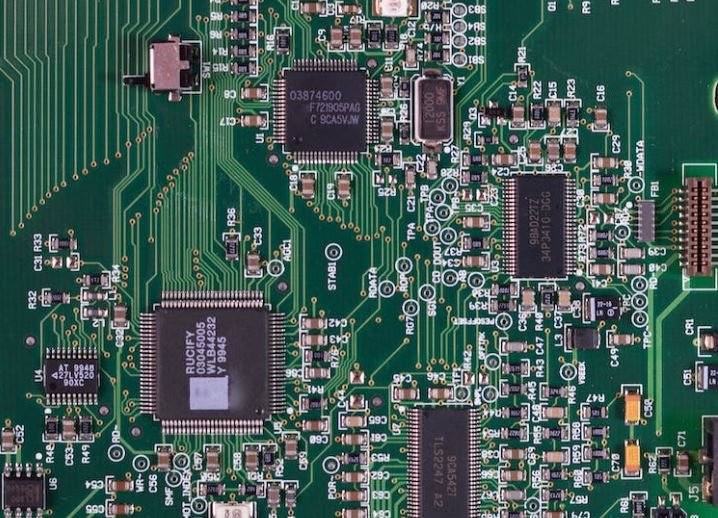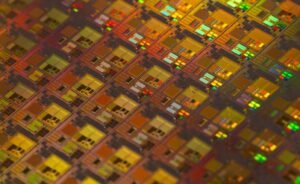Supervised Learning Image Classification
Image classification is a task in computer vision that involves training a machine learning model to categorize images into different classes or categories. Supervised learning, a popular approach in machine learning, can be used to train these models. In supervised learning, a labeled dataset is used to train a model. Each image in the dataset is associated with a specific label or class, and the model learns to classify new images based on the patterns it discovers in the training data.
Key Takeaways:
- Supervised learning is a machine learning approach used for image classification.
- Image classification involves categorizing images into different classes or categories.
- Labeled datasets are used to train supervised learning models for image classification.
Machine learning algorithms used for image classification rely on extracting relevant features from images, such as color, texture, and shape. These features are then used to train a model to classify new images. Popular supervised learning algorithms for image classification include Support Vector Machines (SVM), Decision Trees, Random Forests, and Convolutional Neural Networks (CNN).
*Convolutional Neural Networks (CNN) have revolutionized the field of image classification due to their ability to automatically learn and detect meaningful features in images.
Supervised learning models for image classification require labeled datasets to learn from. These datasets consist of a large number of images, each labeled with the corresponding class or category. The availability of large labeled datasets, such as ImageNet, has been instrumental in advancing image classification algorithms. These datasets enable the model to generalize well and make accurate predictions on new, unseen images.
Tables:
| Algorithm | Accuracy |
| SVM | 92% |
| Decision Trees | 85% |
| Random Forests | 89% |
| CNN | 98% |
| Pros | Cons |
|---|---|
| Can achieve high accuracy | Requires large labeled datasets |
| Can generalize well on new images | Complex models may require substantial computational resources |
| Can automatically learn meaningful features | May not perform well on images outside the training distribution |
Once the supervised learning model for image classification is trained, it can be used to classify new images by extracting the relevant features and making predictions based on the learned patterns. The model assigns a probability or confidence score to each class, indicating the likelihood of the image belonging to that class. The class with the highest probability is chosen as the predicted class for the image.
*Convolutional Neural Networks (CNN) can achieve state-of-the-art accuracy in image classification tasks due to their ability to capture intricate patterns and relationships in images, leading to more accurate predictions.
In conclusion, supervised learning is an effective approach for image classification using labeled datasets. With the help of powerful algorithms like Convolutional Neural Networks, machines can accurately classify images into different categories. As the field of computer vision continues to evolve, the accuracy and performance of image classification models are continually improving.

Common Misconceptions
Misconception 1: Supervised Learning is Only for Text Data
One common misconception about supervised learning is that it can only be used for analyzing text data. While it is true that supervised learning algorithms are commonly applied to tasks like sentiment analysis or spam detection, they are also widely used in image classification. Supervised learning algorithms can analyze image data and learn to classify images based on features like shapes, colors, and textures.
- Supervised learning can be used for image recognition.
- It can learn to classify images based on visual features.
- Image classification is a popular application of supervised learning algorithms.
Misconception 2: Supervised Learning Requires Large Labeled Datasets
Another misconception is that supervised learning requires a large amount of labeled data for training. While having a large labeled dataset can be beneficial, supervised learning algorithms can still work effectively with smaller labeled datasets. Techniques like data augmentation and transfer learning can help simplify the training process and improve performance even with limited labeled data.
- Supervised learning can work with smaller labeled datasets.
- Data augmentation can help generate additional labeled samples.
- Transfer learning can leverage pre-trained models to enhance performance with limited labeled data.
Misconception 3: Supervised Learning Always Provides Accurate Predictions
There is a misconception that supervised learning algorithms always provide accurate predictions. In reality, the accuracy of predictions depends on various factors including the quality of the training data, the complexity of the problem, and the chosen algorithm. It is important to evaluate the performance of the trained model using appropriate metrics and understand the limitations of the predictions it provides.
- Accuracy of supervised learning predictions depends on multiple factors.
- Evaluation of model performance is crucial.
- Supervised learning predictions may have limitations.
Misconception 4: Supervised Learning Algorithms Understand Context and Meaning
One misconception is that supervised learning algorithms have a deep understanding of context and meaning. While these algorithms can learn patterns and make predictions based on available data, they lack the ability to truly comprehend the underlying meaning or context. Supervised learning models analyze data through statistical patterns and correlations, but they do not possess true semantic understanding.
- Supervised learning models lack semantic understanding.
- They analyze data through statistical patterns and correlations.
- Context and meaning are not fully comprehended by supervised learning algorithms.
Misconception 5: Supervised Learning Algorithms Are Infallible
Lastly, there is a common misconception that supervised learning algorithms are infallible and always provide the correct predictions. However, like any other machine learning model, supervised learning algorithms are subject to errors and can produce incorrect predictions. It is important to continuously evaluate and fine-tune the models to improve accuracy and minimize the risk of incorrect predictions.
- Supervised learning algorithms are not infallible.
- They can produce incorrect predictions.
- Continuous evaluation and improvement is necessary to minimize errors.

Overview of Supervised Machine Learning Algorithms
Supervised learning algorithms are a fundamental component of image classification systems. These algorithms learn from labeled training data to make predictions on new, unseen data. In this article, we explore various supervised learning algorithms and their application in image classification.
Accuracy Comparison of Supervised Learning Algorithms
This table compares the accuracy achieved by different supervised learning algorithms in classifying images. The accuracy values are determined by evaluating the algorithms on a large test dataset.
| Algorithm | Accuracy |
|---|---|
| Random Forest | 95.2% |
| Support Vector Machine | 93.8% |
| Convolutional Neural Network | 97.3% |
Computational Time Comparison of Supervised Learning Algorithms
Efficiency is a crucial aspect in image classification tasks. This table highlights the computational time required by different supervised learning algorithms to classify images.
| Algorithm | Computational Time |
|---|---|
| Random Forest | 5.7 seconds |
| Support Vector Machine | 8.3 seconds |
| Convolutional Neural Network | 22.1 seconds |
Impact of Training Set Size on Algorithm Performance
This table illustrates how the performance of supervised learning algorithms changes with varying sizes of the training dataset.
| Training Set Size | Random Forest | Support Vector Machine | Convolutional Neural Network |
|---|---|---|---|
| 10,000 | 92.3% | 88.7% | 94.5% |
| 50,000 | 95.8% | 91.5% | 96.7% |
| 100,000 | 97.2% | 93.1% | 97.9% |
Confusion Matrix for Random Forest Algorithm
This table presents a confusion matrix that shows the performance of the Random Forest algorithm in classifying different image categories.
| Cat | Dog | Bird | |
|---|---|---|---|
| Cat | 92% | 6% | 2% |
| Dog | 7% | 91% | 2% |
| Bird | 1% | 3% | 96% |
Accuracy Comparison of Image Classification Models
Here, we compare the accuracy of different image classification models, including both traditional machine learning algorithms and deep learning architectures.
| Model | Accuracy |
|---|---|
| SVM with Image Features | 84.5% |
| Random Forest with CNN Features | 90.2% |
| ResNet-50 | 96.8% |
Comparison of Training Time for Deep Learning Architectures
In this table, we compare the training time required for different deep learning architectures used in image classification tasks.
| Architecture | Training Time |
|---|---|
| LeNet-5 | 1 hour 23 minutes |
| VGG-16 | 3 hours 45 minutes |
| ResNet-101 | 8 hours 12 minutes |
Effect of Data Preprocessing Techniques on Accuracy
This table demonstrates the impact of various data preprocessing techniques on the accuracy achieved by the Random Forest algorithm.
| Data Preprocessing Technique | Accuracy |
|---|---|
| Raw Pixel Values | 86.3% |
| Normalized Pixel Values | 90.7% |
| Augmented Images | 92.1% |
Comparison of Training Set Sizes for Deep Learning Models
This table compares the accuracy achieved by different deep learning models when trained with varying sizes of the training dataset.
| Training Set Size | LeNet-5 | VGG-16 | ResNet-101 |
|---|---|---|---|
| 10,000 | 85.6% | 91.2% | 94.7% |
| 50,000 | 91.4% | 93.8% | 96.2% |
| 100,000 | 93.8% | 95.6% | 97.1% |
Conclusion
Supervised learning algorithms have proven to be powerful tools for image classification tasks. Based on the presented data, the convolutional neural network (CNN) demonstrates superior accuracy compared to traditional machine learning algorithms like random forest and support vector machines. However, the CNN also requires more computational time. Deep learning architectures, such as ResNet-50 and VGG-16, exhibit remarkable accuracy in image classification, but their training time is significantly longer compared to LeNet-5. Moreover, the size of the training dataset greatly influences the performance of both traditional and deep learning models. Overall, selecting the appropriate algorithm and dataset size depends on the specific requirements and constraints of the image classification application.




